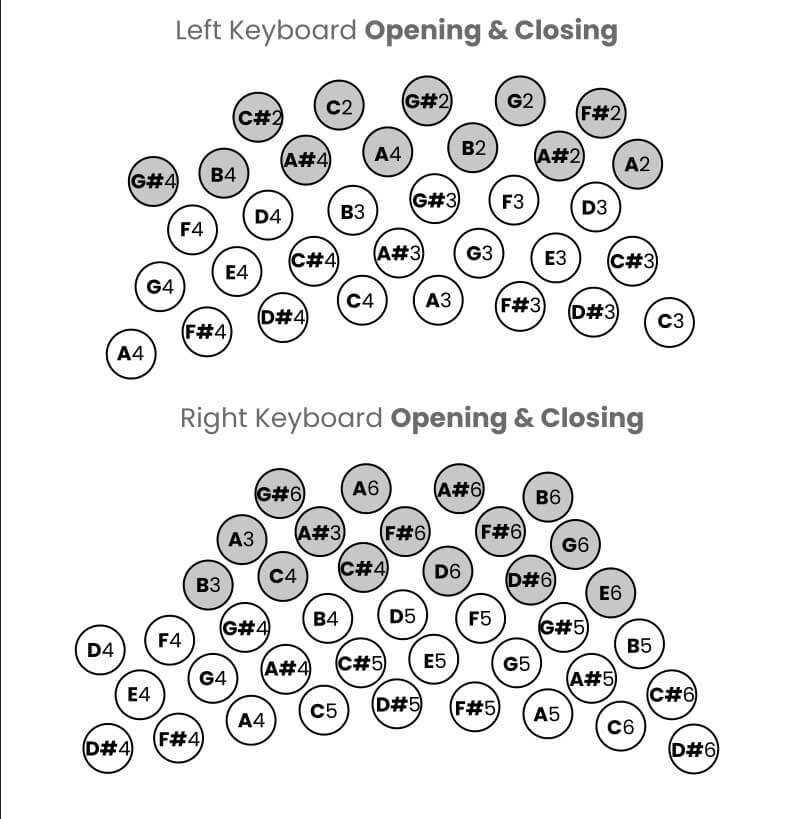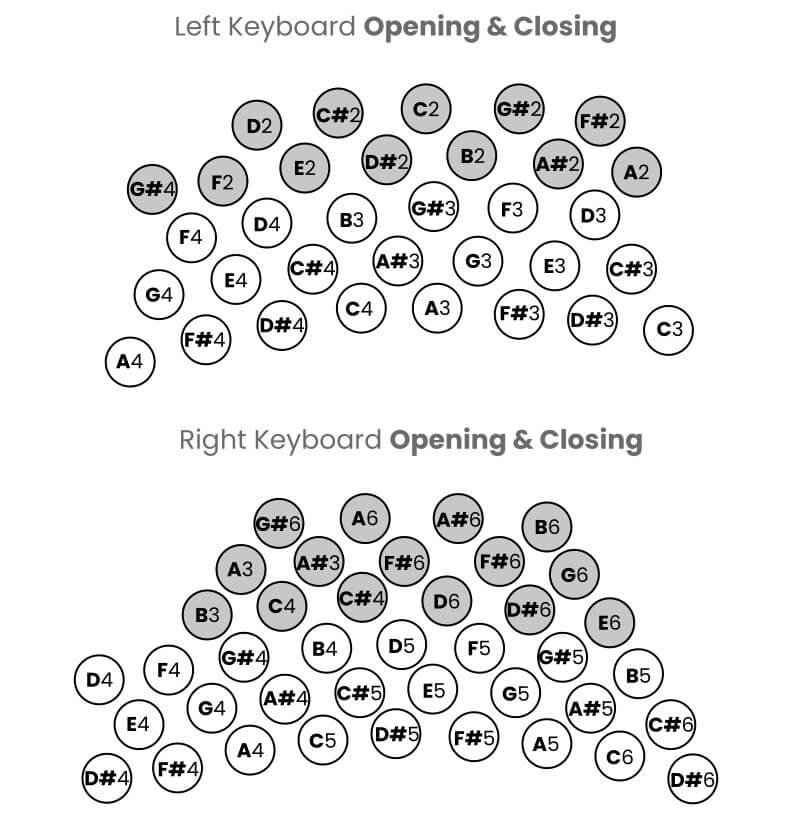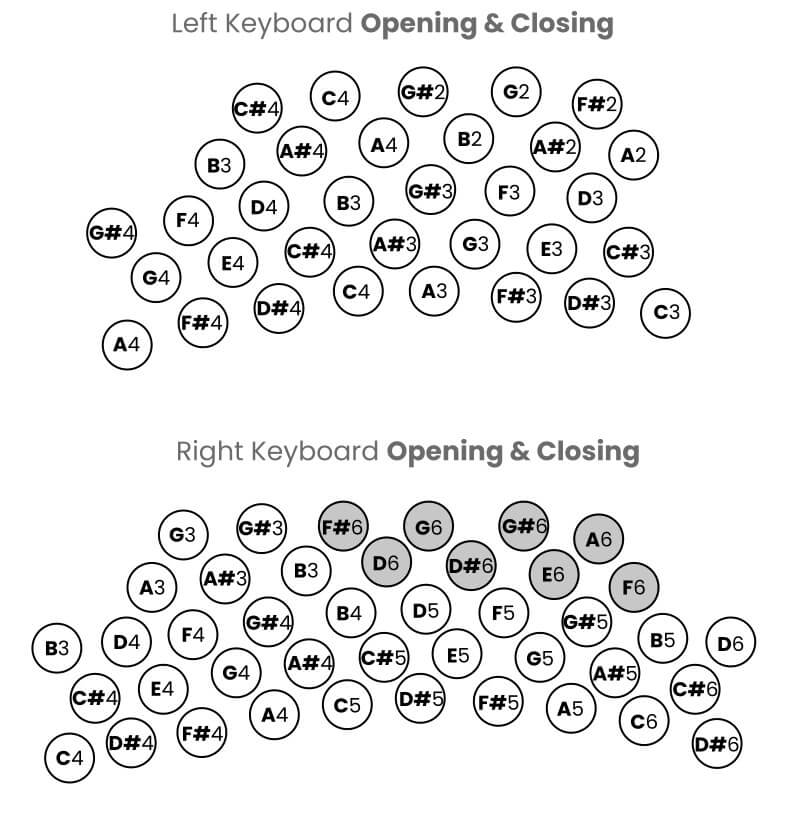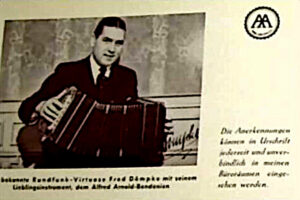
Optimizing Bandoneón Practice When Time is Short
Strategies to Perfect Bandoneón Practice There are times when musicians simply can’t dedicate as much time as they’d like to practicing, refining their skills, or
This article provides PDF files containing the keyboard layouts of the most common chromatic bandoneon types and their main features.
A chromatic bandoneon (AKA unisonoric bandoneon) is a type of bandoneon where the keyboard layout follows a sequential logic.
While the Rheinische 142 is the most common bandoneon, chromatic bandoneons are popular because of their user-friendly, sequential keyboard layout that facilitates faster learning.
However, I’ve observed that sometimes it’s difficult to obtain keyboard layouts for chromatic bandoneons. Compounding this issue is the fact that there isn’t just one type of chromatic bandoneon, but several.
To address this, I’ve compiled the three most prevalent chromatic systems into a single PDF.
The Péguri system was devised by French accordionist and bandoneonist Charles Péguri in the 1920s.
Driven by the desire of many French, Belgian, and Swiss accordionists to play tango without dedicating significant time to mastering the intricate Rheinische keyboard, Charles Péguri adapted a Rheinische 142 bandoneon by arranging the keyboard so that opening and closing the bellows produce the same note. This unique characteristic is the reason it’s called a unisonoric bandoneon.
Another key innovation of this bandoneon lies in its sequential and “chromatic” button arrangement.
The notes follow a semitone sequence.

Button accordion players will readily grasp the note order on this type of bandoneon.
Olivier Manoury developed the Manoury system to address certain limitations of the traditional Péguri system. All brand-new Péguri unisonoric bandoneons incorporate this keyboard layout.

In the video below I had the opportunity to interview Olivier Manoury, where we specifically discussed the chromatic bandoneon.
The Crosio-Caliero system was conceived by Pablo Caliero (stage name of Paul Chalier), a French accordionist and multi-instrumentalist, in the 1950s.
Several accordion manufacturers produced the Crosio-Caliero system, including the renowned Fratelli Crosio of Stradella, Italy, but production ceased in the 1980s.

While the Crosio-Caliero system is currently less common, there are still examples available on major marketplaces. Therefore, I believe it’s valuable to include it for those considering purchasing this type of instrument.
You can download the PDF containing the layouts of the three unisonoric systems below by clicking the download button.
I’ve discussed the unisonoric bandoneon in depth in the aforementioned video and also in this article comparing the unisonoric and bisonoric systems.
I also discussed other unisonoric systems that I haven’t mentioned in this text, as well as the cost of Peguri systems (and other unisonoric systems), and how and where to find them. You can read the article by clicking here.
The chromatic bandoneon enjoys a certain popularity because those who want to approach the bandoneon without having to spend a lot of time learning the complex and chaotic keyboard of the Rheinische choose it.
France is undoubtedly the country of the chromatic bandoneon. It is worth mentioning Olivier Manoury, who can be considered the pioneer of the contemporary chromatic bandoneon. Also noteworthy in France are William Sabatier, Lysandre Donoso, and the great Richard Galliano.
There is also an important tradition in Italy. There are the masters Gianni Iorio and Flaviano Braga, and the master Fabio Furia, who played the chromatic system for years before switching to the Rheinische 142.
I apologize to readers for not mentioning everyone who deserves to be on this list. I am not aware of everyone who plays the chromatic system, also because it is almost impossible to acoustically distinguish the Peguri from the Rheinische.
If you would like to recommend a bandoneonist who plays the chromatic bandoneon, please send me a message or write in the comments and I will be happy to update the list.
If you find my work helpful, you can show your appreciation by sharing this article, subscribing to the newsletter (the subscription form is in the footer of the site), or subscribing to my YouTube channel.
I hope you found this content helpful. Enjoy the music!

Strategies to Perfect Bandoneón Practice There are times when musicians simply can’t dedicate as much time as they’d like to practicing, refining their skills, or

The project Duruflé meets the Bandoneón proposes an innovative exploration of the music of the great French composer Maurice Duruflé through the bandoneón, an instrument

In this bandoneón tutorial I explain the first of a series of preparatory exercises. After having dedicated a series of videos to the fundamental aspects

Learn about chromatic bandoneons! Download FREE PDF keyboard layouts for Peguri, Manoury, & Crosio-Caliero systems. Unisonoric bandoneon explained for beginners.

A Lesson from the Bandoneon to Move from Stage Panic to Expressiveness 2024 is coming to an end and I have been very busy during

Who is Fred Dömpke and why should deserve more consideration among the bandoneon players? The bandoneon is conquering a significant role in jazz. Many bandoneon